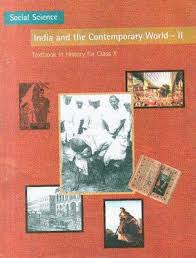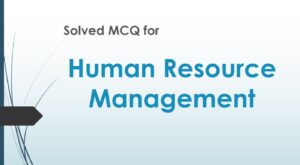Class 10 - Social Science : India and the Contemporary World II
Chapter 7 - Print Culture and the Modern World

Top Block 1
Question :1. Give reasons for the following :
(a) Woodblock print only came to Europe after 1295. [CBSE 2013]
(b) Martin Luther was in favour of print, and spoke out in praise of it.
(c) The Roman Catholic Church began keeping an Index of Prohibited books from the mid-sixteenth century.
(d) Gandhi said the fight for ‘Swaraj is a fight for the liberty of speech, liberty of the press and freedom of association.
Answer :
(b) Because it was the printing press which gave him a chance to criticise many of the practices and rituals of the Roman Catholic Church.
(c) Print and popular literature encouraged many distinctive interpretations of religious faiths and ideas. In the 16th century, Manocchio, a miller in Italy began to read books available readily in his locality. He gave a new interpretation of the Bible, and formulated a view of God, and creation that enraged the Roman Catholic Church.
As a result, Manocchio was hauled up twice, and ultimately executed when the Roman Church began its inquisition, and to repress the therapeutical ideas. After this several control measures were imposed on publishers and booksellers. In 1558, the Roman Church decided to maintain an Index of prohibited books.
(d) Mahatma Gandhi uttered these words in 1922 during the Non-Cooperation Movement (1920-1922). Because according to him without the liberty of speech, the liberty of the press and freedom of association, no nation can even survive. If the country was to get free from foreign domination, then these liberties were quite important. If there is no liberty of speech, liberty of press and freedom of association, then there is no nationalism. Nationalism requires these three prerequisites for its survival. Mahatma Gandhi fully knew the fact. That is why, he said so, particularly about these three freedoms. How could one ever think of nationalism in the absence of these three essential conditions ?
Question :2. Write short notes to show that you know about:
(a) The Gutenberg Press.
(b) The Erasmus’s idea of the printed book.
(c) The Vernacular Press Act. [CBSE Sept. 2011, 2012]
Answer :
(b) Erasmus’s idea of the printed book : Erasmus, a Latin scholar and a Catholic reformer, who criticised the excesses of Catholicism, but kept his distance from, Luther, expressed a deep anxiety about printing. He wrote in Adages (1508) :
‘To what corner of the world do they not fly, these swarms of new books ? It may be that one here and there contributes something worth knowing, but the very multitude of them is hurtful to scholarship, because it creates a glut and even in good things, satiety is most harmful… [printers] fill the world with books, not just trifling things (such as I write, perhaps), but stupid, ignorant, slanderous, scandalous, raving, irreligious and seditious books, and the number of them is such that even the valuable publications lose their value.’
(c) The Vernacular Press Act : The revolt of 1857 forced the government to curb the freedom of the press. After the revolt, enraged Englishmen demanded a clamp down on the ‘native’ press. As vernacular newspapers became assertively nationalist, the colonial government began debating measures of strict control.
In 1878, the Vernacular Press Act was passed, on the model of Irish Press Laws. It provided the government with extensive rights to censor reports and editorials in the vernacular press. The government started keeping regular track of the vernacular newspapers published in different provinces. When a report was judged as seditious, the newspapers were given a warning and if the warning was ignored, the press was liable to be seized, and the printing machinery could be confiscated.
Question :3. What did the spread of print culture in the nineteenth century India mean to :
(a) Women
(b) The poor
(c) Reformers
Answer :
(c) (i) Reformers used newspapers, journals and books to highlight the social evils prevailing in the society. Raja Ram Mohan Roy published the SambadKaumudi to highlight the plight of widows.
(ii) From the 1860s, many Bengali women writers like Kailashbashini Debi wrote books highlighting the experiences of women about how women were imprisoned at home, kept in ignorance, forced to do hard domestic labour and treated unjustly by the menfolk, they served. In the 1880s, in the present day Maharashtra, TarabaiShinde and PanditaRamabai wrote with passionate anger about the miserable lives of the upper-caste Hindu women, especially the widows. The poor status of women was also expressed by the Tamil writers.
(iii) JyotibaPhule was a social reformer. He wrote about the poor condition of the ‘low caste’. In his book Gulamgiri (1871), he wrote about the injustices of the caste system. In the 20th century, B.R. Ambedkar also wrote powerfully against the caste system. He also wrote against untouchability.
E.V. RamaswamyNaicker, also known as Periyar, too wrote about the caste system prevailing in Madras (Chennai).
Question :4. Write about the different innovations in the printing technology during the 19th century ? [CBSE Sept. 2010]
Answer :
(i) By the mid-nineteenth century, Richard M. Hoe of New York had perfected the power-driven cylindrical press. This was capable of printing 8,000 sheets per hour. This press was particularly useful for printing newspapers.
(ii) In the late nineteenth century, the offset press was developed which could print up to six colours at a time.
(iii) From the turn of the twentieth century, electrically operated presses accelerated printing operations.
Question :5. Why did some people in the eighteenth century Europe think that print culture would bring enlightenment and end despotism ? [CBSE Sept. 2010, 2011]
Or
Assess the impact of print revolution on the European society. [CBSE 2013]
Answer :
(i) Spreading of new ideas : After the coming of the print culture, the ideas of scientists and philosophers now became more accessible to the common people. Ancient and medieval scientific texts were compiled and published.
(ii) Scientific discoveries : Maps and more accurate scientific diagrams were widely printed. When scientists like Issac Newton began to publish their discoveries, they could influence a much wider circle of scientifically-minded readers.
(iii) Writings of scholars : The writings of thinkers such as Thomas Paine, Voltaire and Jean Jacques Rousseau were also widely printed, and could gain popularity. Thus, their ideas about science, reasoning and rationality found their way into popular literature.
(iv) Books as medium of progress: By the mid-18th century, books became a medium of spreading progress and enlightenment which could change the society and the world. It was also believed that the books could literate society from despotism and tyranny.
(v) Ideas of enlightened thinkers : The print popularised the ideas of the enlightened thinkers like that of Martin Luther who attacked the authority of the Church and the despotic power of the state, e.g., Voltaire and Rousseau.
(vi) A new culture of dialogue and debate : The print created a new culture of dialogue and debate and the public, became aware of reasoning and recognised the need to question the existing ideas and beliefs.
Question :6. Why did some people fear the effect of the easily available printed books ? Choose one example from Europe and one from India. [CBSE Sept. 2011]
Or
Explain the role played by print in bringing about a division in the Roman Catholic Church. [CBSE Sept. 2011]
Or
Explain the role played by print in the spreading of Protestant Reformation. [CBSE 2012, 2013]
Answer :
Not everyone welcomed the printed books and those, who did, also had fear about them. Many were of the opinion that printed words and the wider circulation of books, would have a negative impact on people’s minds. They feared that if there was no control over what was printed and read, then rebellious and irreligious thoughts might gain importance. There was also fear in the minds of scholars that the authority of ‘valuable’ literature would be destroyed. The new print was criticised by religious authorities, monarchs, as well as by writers and artists. Let us consider the implication of this in one sphere of life in the early modern Europe, i.e., religion.
Martin Luther was a German monk, priest, professor and a Church reformer. In 1517, he wrote Ninety Five Theses and openly criticised many of the practices and rituals of the Roman Catholic Church. A printed copy of this was pasted on a Church door in Wittenberg. It challenged the Church to debate his ideas. Luther’s writings were immediately copied in vast numbers and read widely. This led to a division within the Church, and led to the beginning of the Protestant Reformation.
Manx; conservative Fundus believed that a literate girl would be widowed and Muslims believed that educated women could get corrupted by reading Urdu romances. There were many instances of women defying this prohibition.
Question :8. Explain how the print culture assisted the growth of nationalism in India. [CBSE Sept. 2010, 2011]
Answer :
(i) New ideas and debates : There were many who criticised the existing practices and campaigned for reforms, while others countered the arguments of the reformers. These debates were carried out openly in public and in print. Printed tracts and newspapers not only spread the new ideas, but they also shaped the nature of the debate. All this assisted the growth of nationalism.
(ii) Connecting various communities : Print did not only stimulate the publication of conflicting opinions amongst communities, but it also connected communities and people living in different parts of India. Newspapers conveyed news from one place to another, creating pan-Indian identities.
(iii) Print and newspaper : Despite repressive measures, nationalist newspapers grew in numbers in all parts of India. They reported on colonial misrule and encouraged nationalist activities. When Punjab revolutionaries were deported in 1907, BalgangadharTilak wrote with great sympathy about them in Kesari.
(iv) Various novels on national history: Many novels written by Indian novelists like Bankim’sAnandamath created a sense of pan-Indian belonging. MunshiPremchand’s novel, Godan highlighted how Indian peasants were exploited by the colonial bureaucrats.
(v) Various images of Bharatmata : Printers like Raja Ravi Verma and Rabindranath Tagore produced images of Bharatmata which produced a sense of nationalism among Indians. The devotion to mother figure came to be seen as an evidence of one’s nationalism.
Mddle block 1
Multiple Choice Questions
Question :1. Which one of the following is the oldest Japanese book? [CBSE (CCE) 2011]
(a) SuttaPitaka
(b) Diamond Sutra
(c) MahaVamsa
(d) DipaVamsa
Question :2. The first printing press was developed by [CBSE (CCE) 2011]
(a) Marco Polo
(b) Kitagawa Utamaro
(c) Johann Gutenberg
(d) Erasmus
Question :3. Who wrote about the injustices of the caste system in ‘Gulamgiri’? [CBSE (CCE) 2011]
(a) Raja Rammohan Roy
(b) JyotibaPhule
(c) BalgangadharTilak
(d) Bankim Chandra Chattopadhyay
Question :4. Who among the following is an enlightened thinker whose writings are said to have created conditions for a revolution in France? [CBSE (CCE) 2011]
(a) Rousseau
(b) Louise Setastin Mercier
(c) Menocchio
(d) Johann Gutenberg
Question :5. Which religious reformer was responsible for the Reformation Movement?
(a) Martin Luther
(b) Martin Luther King
(c) The Grimm Brothers
(d) George Elliot
Question :6. Who among the following was not a women novelist?
(a) Jane Austen
(b) Bronte Sisters
(c) George Eliot
(d) Maxim Gorky
Question :7. Which of the following countries was the earliest producer of printing material?
(a) Persia
(b) India
(c) China
(d) Japan
Question :8. From where did Marcopolo bring back the knowledge of wood block printing to Italy?
(a) China
(b) Japan
(c) Sri Lanka
(d) India
Question :9. By whom was the New Testament first translated?
(a) Erasmus
(b) Leonardo da vince
(c) Martin Luther
(d) Manocchio
Question :10. In ancient India which of the following material was used for writing manuscripts?
(a) Parchments
(b) Vellum
(c) Palm leaves
(d) Paper
Question :11. Name the first weekly magazine published in India by Gangadhar Bhattacharya.
(a) Anandabazar Patrika
(b) Bengal Gazette
(c) Yugantar
(d) SambadKaumudi
Question :12. By whom was ‘SambadKaumudi’ published’ in 1821?
(a) Iswer Chandra Vidyasagar
(b) C.R. Das
(c) Raja Rammohun Roy
(d) Swami Vivekanand
Question :13. ‘Amar Jiban’ is the autobiography of which of the following woman author?
(a) Rashsundari Debi
(b) Rokeya Hossein
(c) Kailashbashini Devi
(d) PanditaRamabai
Question :14. Who among the following was popularly known as Periyar ?
(a) Dr. B.R. Ambedkar
(b) JyotibaPhule
(c) E.V. RamaswamyNaicker
(d) S. Naidu
Question :15. Which one of the following best explains calligraphy ?
(a) The art of painting
(b) The art of map drawing
(c) The art of beautiful and stylised writing
(d) The art of sketching
Question :16. ‘Edo’ was the earlier name of which of the following places ?
(a) Shanghai
(b) Tokyo
(c) Seoul
(d) Hongkong
Question :17. Vellum refers to
(a) parchment made from the skin of animals.
(b) written material made from the bark of trees.
(c) paper made out of pulp.
(d) written material made from cloth.
Question :18. Who was Marcopolo ?
(a) German scientist
(b) English philosopher
(c) Spanish explorer
(d) Italian traveller/explorer
Question :19. Which of the following inspired Gutenberg to design and model a printing press ?
(a) Wood block printing of China
(b) Olive press in agricultural estates
(c) Hand written manuscripts
(d) Print technology of Japan
Question :20 Martin Luther’s writings and ideas led to which of the following movements ?
(a) Counter Reformation Movement
(b) Renaissance Movement
(c) Reformation Movement
(d) Intellectual Movement
Question :21. The reformation movement was launched against the corrupt practices of which of the following group ?
(a) Feudal Lords
(b) Protestant Church
(c) Catholic Church
(d) Absolute rulers
Question :22. Which of the following refers to ‘inquisition’ ?
(a) Protestant tribunal to punish heretics
(b) Catholic court to try and punish the heretics
(c) The state judicial body for punishing the criminals
(d) All the above
Question :23. Aim of Protestant Reformation was to
(a) reform religion
(b) reform the Catholic church
(c) reform Jewish religion
(d) to protest against all reform
Question :24. Erasmus was a
(a) Latin scholar and Catholic reformer
(b) French scholar who advocated Protestantism
(c) Swedish scholar who translated the Bible
(d) British scholar who opposed Catholic Church
Question :25. What was chapbooks ?
(a) Books which were cheap
(b) The pocket size books sold by travelling peddler
(c) Book sold on footpath
(d) Handwritten books
Question :26. An alamnac refers to
(a) a ritual calendar
(b) a dictionary
(c) a religious book
(d) a long poem
Question :27. In France what was known as ‘BiliothequeBleue’ ?
(a) A blue coloured book
(b) A blue coloured, cheap book made out of poor quality paper
(c) A book made of excellent blue silk for rich people
(d) A blue coloured writing pad
Question :28. Which 18th century French novelist declared, ‘The printing press is the most powerful engine of progress’ ?
(a) Rousseau
(b) Voltaire
(c) Mercier
(d) Montesquieh
Question :29. The print culture created condition for which of the following revolutions ?
(a) French Revolution
(b) Russian Revolution
(c) Glorious Revolution
(d) American Revolution
Question :30. Penny magazine was meant only for
(a) old people
(b) poor people
(c) women
(d) children
Question :31. The scribes refer to
(a) Authors
(b) Poets
(c) Skilled hand writers
(d) Skilled painters
Question :32. Which of the following refers to print revolution ?
(a) Invention of printing press
(b) Shift from hand printing to mechanical printing
(c) Revolt of people against printed matters
(d) Handwritten manuscripts for printed books
Question :33. Mark the correct response. Due to invention of printing press
(a) reading culture developed
(b) cost of books was reduced
(c) the time and labour required to produce books came down
(d) all the above
Question :34. Richard M. Hoe of New York was well known for
(a) inventing the printing press
(b) perfecting the power-driven cylindrical press
(c) for inventing woodblock printing
(d) for inventing electrical typing machine.
Question :35. Why was James Augustus Hickey persecuted by Governor General Warren Hastings ?
(a) For poor editing of Bengal Gazette
(b) For publishing a lot of gossip about company’s Senior Official
(c) For writing propaganda material against the Indian
(d) For publishing sub standard material
Question :36. With what purpose was the Vernacular Press Act passed by Lord Lyton in 1878 ?
(a) To popularise Vernacular Press
(b) To supervise Vernacular Press
(c) To clamp down and censor the native press
(d) To encourage authors writing in Indian languages.
Question :37. Why was the Vernacular Act of 1878 opposed by the Indians ?
(a) It did not allow the Indian authors to write in their newspapers.
(b) It challenged the freedom of press of the Indians.
(c) It encouraged the Indians to publish religious materials in the newspapers.
(d) To defy colonialism.
Question :38. How did nationalist newspapers inspire nationalism in India ? Mark the most appropriate answer.
(a) By writing various articles in the newspapers.
(b) By publishing the speeches of nationalist leaders.
(c) By reporting the colonialm is rule and encouraging nationalist activities through press.
(d) By encouraging Indian authors.
ANSWERS
|
|
|
|



